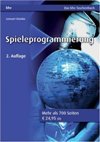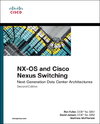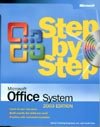
-
 Anglický jazyk
Anglický jazyk
Authentication methods
Autor: Source: Wikipedia
Source: Wikipedia. Pages: 97. Chapters: Authentication, Seal, Signature, Shibboleth, Caller ID, Biometrics, Identity document, List of shibboleths, Biometric passport, Automatic number plate recognition, Two-factor authentication, DNA barcoding, Counterfeit... Viac o knihe
Na objednávku, dodanie 2-4 týždne
22.97 €
bežná cena: 26.10 €
O knihe
Source: Wikipedia. Pages: 97. Chapters: Authentication, Seal, Signature, Shibboleth, Caller ID, Biometrics, Identity document, List of shibboleths, Biometric passport, Automatic number plate recognition, Two-factor authentication, DNA barcoding, Counterfeit consumer goods, Digital watermarking, MyKad, Fingerprint recognition, Security printing, Trusted timestamping, Security hologram, Login, Code wheel, Municipal identification card, Sealing wax, Security question, FADO, Public Register of Travel and Identity Documents Online, Multi-factor authentication, Risk-based authentication, Location-based authentication, Mutual authentication, Manu propria, Time-based authentication, Kao, Dialed Number Identification Service, Ticket punch, Guksae, Countersign, Expertization, Protocol for Carrying Authentication for Network Access, Molecular marker. Excerpt: An identity document (also called a piece of identification or ID, or colloquially as one's '"papers"') is any document which may be used to verify aspects of a person's personal identity. If issued in the form of a small, mostly standard-sized card, it is usually called an identity card (IC). In some countries the possession of a government-produced identity card is compulsory while in others it may be voluntary. In countries which do not have formal identity documents, informal ones may in some circumstances be required. In the absence of a formal identity document, some countries accept driving licences as the most effective method of proof of identity. Most countries accept passports as a form of identification. Information present on the document or in a supporting database might include the bearer's full name, a portrait photo, age, birth date, address, an identification number, profession or rank, religion, ethnic or racial classification, restrictions, and citizenship status. New technologies could allow identity cards to contain biometric information, such as photographs, face, hand or iris measurements, or fingerprints. Electronic identity cards or e-IDs are already available in some territories such as Hong Kong, Malaysia, Estonia, Finland, Belgium, Portugal, Morocco and Spain. The universal adoption of identity cards is supported by law enforcement officials who claim that it will make surveillance and identification of criminals easier. However, concern is also expressed about the extensive cost and potential abuse of hi-tech smartcards. In the United Kingdom and the United States especially, government-issued compulsory identity cards or, more precisely, their centralised database are a source of debate as they are regarded as an infringement of privacy and civil liberties. Most criticism is directed towards the enhanced possibilities of extensive abuse of centralised and comprehensive databases storing sensitive data. A 2006 survey of UK Open Universi
- Vydavateľstvo: Books LLC, Reference Series
- Rok vydania: 2012
- Formát: Paperback
- Rozmer: 246 x 189 mm
- Jazyk: Anglický jazyk
- ISBN: 9781157718390

 Nemecký jazyk
Nemecký jazyk 










